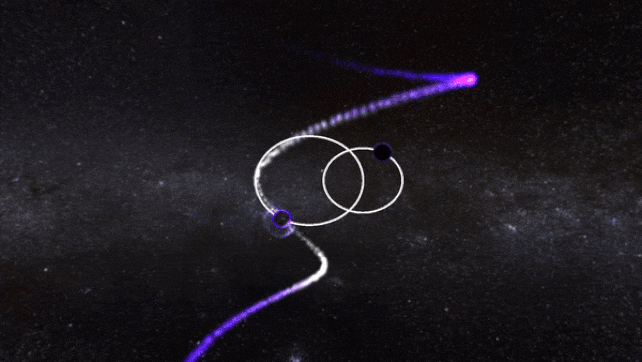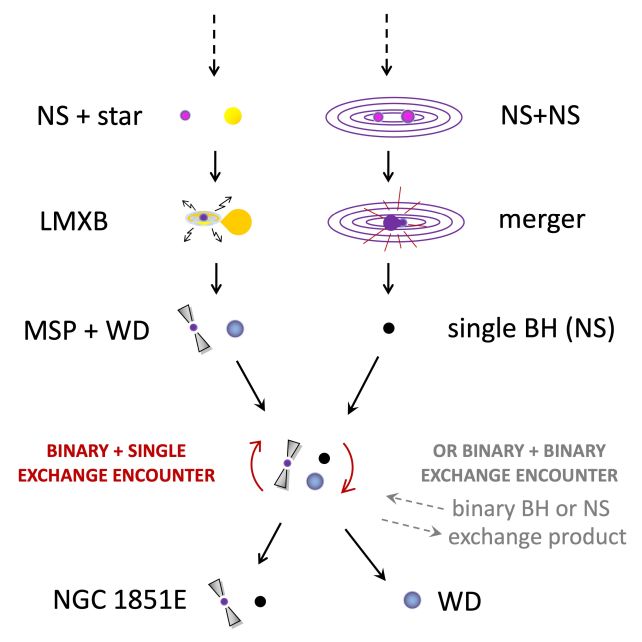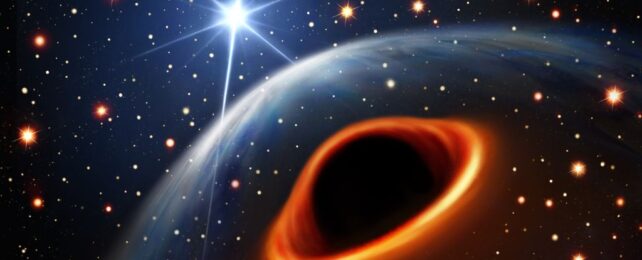There's something strange on the outskirts of the Milky Way.
In a cluster of stars skimming the outer reaches of the galaxy, astronomers have identified something very small, and very dense, locked in an orbital dance with a millisecond pulsar. There are, they say, only two things the mystery object could be – a neutron star or a black hole – but either one of those things would be an exciting find.
If it's a neutron star, it could be the heaviest of its kind we've ever seen. If it's a black hole, it's the lightest of its kind.
With a mass equivalent between 2.09 and 2.71 Suns, it sits at the lower end of a compact object desert known as the lower mass gap – a desert between 2.2 and 5 solar masses in which very few neutron stars or black holes have ever been detected.

"Either possibility for the nature of the companion is exciting," says astrophysicist Ben Stappers of the University of Manchester. "A pulsar-black hole system will be an important target for testing theories of gravity and a heavy neutron star will provide new insights in nuclear physics at very high densities."
Neutron stars and black holes are very closely related. They're both super-dense objects that form from the gravitational collapse of the core of a massive star when it dies.
The difference is the mass. A neutron star can be up to around 2.3 times the mass of the Sun. It's prevented from collapsing completely by something called degeneracy pressure, whereby multiple particles of a similar quantum nature can't occupy the same state, including a physical space.
But the particles inside a neutron star are packed as tight as they can get; the star is analogous to one big atomic nucleus.
Add more mass, however, and even degeneracy pressure cannot prevent further collapse. So more massive cores should, theoretically at least, collapse completely into black holes.
However, despite the upper neutron star mass limit sitting at around 2.3 Suns, very, very few black holes have been detected below 5 solar masses. The unobserved measurements between the numbers is the lower mass gap.

Led by astrophysicists Ewan Barr and Arunima Dutta of the Max Planck Institute for Radio Astronomy, an international team of researchers discovered the object by studying a strange millisecond pulsar named PSR J0514-4002E, located in a cluster of stars named NGC 1851 some 54,000 light-years from the galactic center.
Radio data collected by the MEERKat array in South Africa revealed the presence of an unseen binary companion on a 7.44-day orbit with the pulsar; the researchers wanted to know what that object was.
Millisecond pulsars, you see, are neutron stars that spin extremely fast. As they spin, they emit radio waves at precisely timed intervals. PSR J0514-4002E spins 170 times a second, pulsing like the sound of static. Because its timing is so precise, astronomers can look for tiny, tiny variations in the pulses and use that information to calculate features of the pulsar, as well as its distance and any binary companions.
"Think of it like being able to drop an almost perfect stopwatch into orbit around a star almost 40,000 light years away and then being able to time those orbits with microsecond precision," Barr says.

With this pulsar timing data, the researchers were able to calculate the distance to PSR J0514-4002E, the mass of the pulsar, and the mass of the system as a whole. By subtracting the mass of the pulsar, they were able to determine the mass of the mystery object.
The object is far too dim to be a main-sequence star, and far too massive to be a white dwarf (that's the compact object lighter than neutron stars, on the dead star scale). That only leaves two possibilities: neutron star, or black hole.
It's impossible at this stage to say which one it is, but the researchers believe that it is the product of a previous merger between two neutron stars. Several years ago, a similar collision detected using gravitational waves resulted in a 2.6 solar-mass-object. With an upper limit of 2.76 solar masses, this latest find has a chance of being a bigger neutron star. If neither is, in fact, a black hole.
Now that it's been found, the researchers are resolved to unmask its identity.
"We're not done with this system yet," Dutta says. "Uncovering the true nature of the companion will be a turning point in our understanding of neutron stars, black holes, and whatever else might be lurking in the black hole mass gap."
The discovery has been published in Science.
